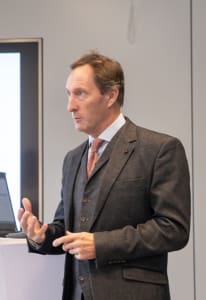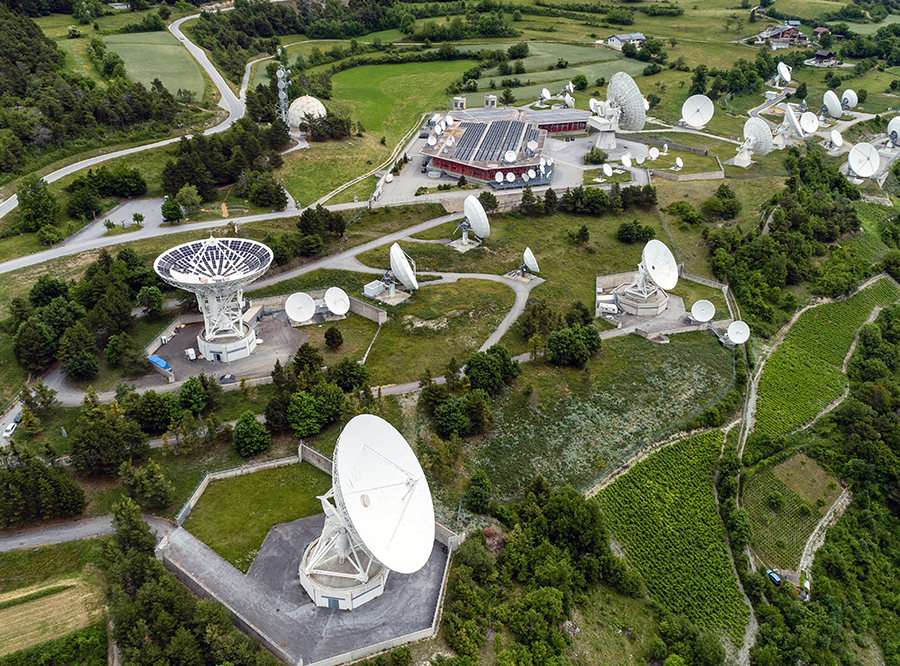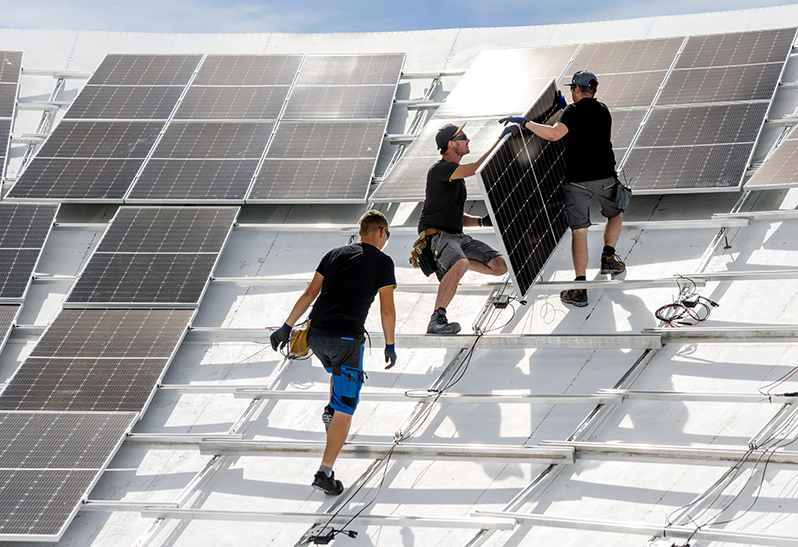Giving old satellite dishes a new lease on life –
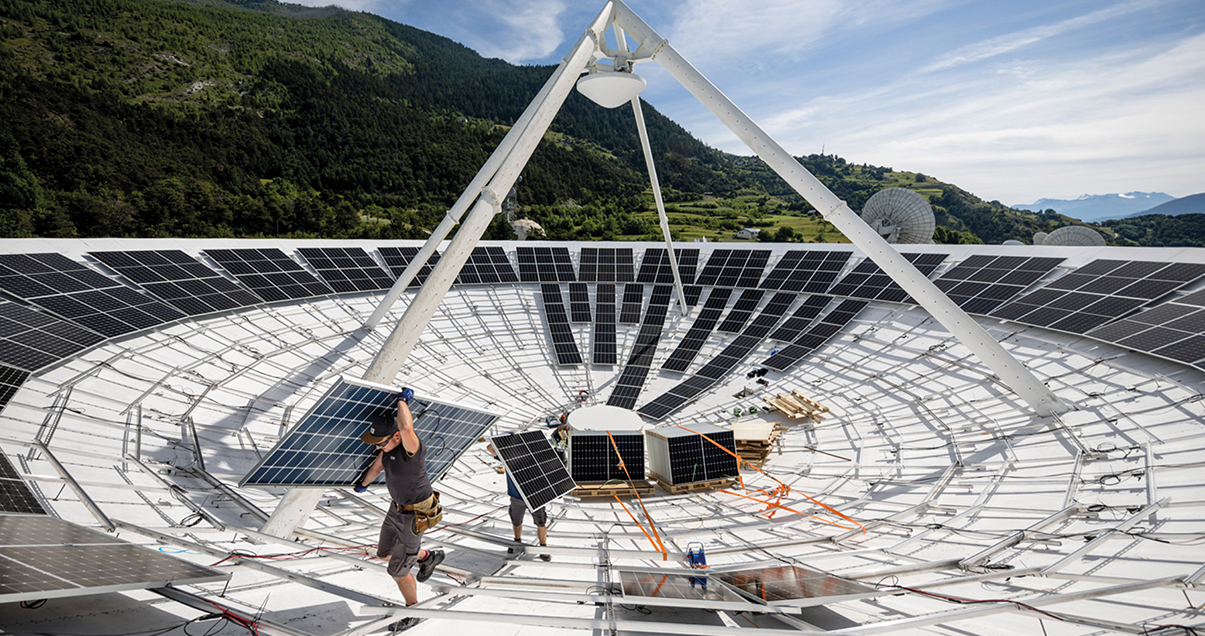
A disused satellite dish in the Swiss mountains has been producing solar power since November 2022. Here’s how it happened…
Two questions occupied John Harris, CEO of LEUK Teleport & Data Centre, in summer 2020: how can we make the company’s energy supply even more sustainable? And what do we do with the outdated parabolic antennas on the site?
The gigantic satellite dishes that have dotted the landscape of the Swiss town of Leuk since 1972 had become outdated. Thanks to more powerful electronics, satellite communications these days are received using much smaller parabolic reflectors.
Harris had no intention of scrapping assets and reducing the antennas to nothing more than the value of the metal that they contained simply because of changes in the satellite market. “We should find another use for them,” he thought. One option, explains Harris, was to repurpose them for radio astronomy to detect electromagnetic radiation from space. “We could have gone down the same road. There are some prestigious research establishments. But given the pristine environment we love and work in, it seemed to make more sense to me to pursue the issue of sustainability.”
“We could have gone down the same road. There are some prestigious research establishments. But given the pristine environment we love and work in, it seemed to make more sense to me to pursue the issue of sustainability.”
– John Harris, CEO of LEUK Teleport & Data Centre
All of a sudden, he hit upon the idea. The satellite dishes that had been receiving transmissions from space for 50 years were capable of moving to track signals. Instead of aiming them at satellites, they could follow the sun. And instead of radio waves, they could capture solar energy that could then be used to generate electric current using photovoltaics. Ingenious, right?
But there are always a few technical hurdles to overcome before any idea can be put into practice. The consultants that the company was working with suggested talking to some of the big electricity companies in Switzerland to find out whether they could help. “So two or three came by to take a look at the site,” recalls Harris.
“Understandably, their initial reaction was one of “What?” But when you explain that these dishes can move, that we can make them track the sun […] so, even through winter, we can have much more production than a normal solar panel can in a fixed position on the ground, they were intrigued.”
One team impressed Harris with expertise and judgment. “CKW were just fantastic – their people going on a tour, examining the project, coming back saying ‘you know, we think this is a great idea, we can do that.”
FACTS & FIGURES
The satellite PV system in Leuk is extremely efficient as a result of the characteristics of the satellite dishes themselves and their location.
- The solar panels are fitted to the insides of the satellite dishes, where the solar irradiation is at its strongest.
- The bright surfaces of the satellite dishes reflect the sunlight onto them. These bifacial PV modules are capable of generating energy from sunlight on both sides.
- The dishes can be oriented to track the sun.
- Very little snow settles on the panels.
- Solar panels are generally more effective at colder temperatures.
- The data center and satellite dishes are situated at roughly 1,000 meters above sea level, so are usually above the fog line. This means that the system receives more sunlight than others at lower elevations.
The satellite dish with a diameter of 32 meters contains 307 solar panels with a rated power of 116 kWp. They produce around 110,000 kWh annually.
Getting a square peg into a round hole
At the time, Manuel Jossi was project manager at CKW for the implementation of the satellite dish PV system in Leuk. He is now deputy head of solar technology for central Switzerland. What most impressed him was the size of the antenna, measuring 32 meters across. “I was determined to build the system even though it was immediately clear how much of a challenge it was going to be.”
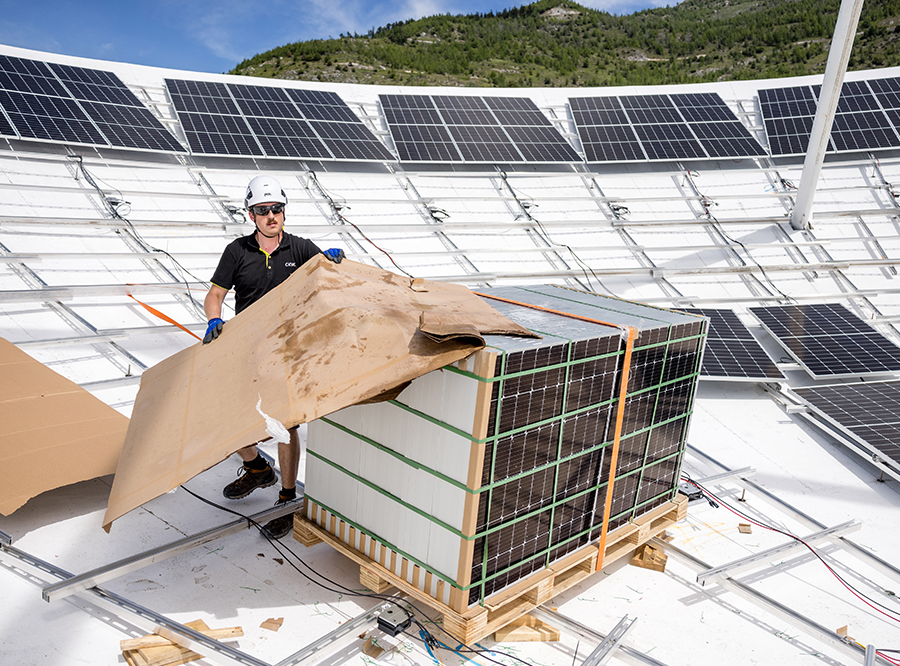
“I was determined to build the system even though it was immediately clear how much of a challenge it was going to be.”
– Manuel Jossi, project manager for the implementation of the satellite dish PV system
Wind was a major factor in the design of the system. “Given its location, the entire system needs to be capable of withstanding winds of up to 200 kilometers per hour.” Yet he found it a fascinating assignment – “it was certainly anything but ordinary.”
In fact, his installation team had its work cut out for it. “The curvature of the dishes presented something of a challenge. After all, we were still working with flat solar panels.” They found a solution, though. “We built a frame rather like a spider’s web and mounted the 307 panels on that.” Standard components were used for the most part, but “we developed and produced a few specialist parts at our in-house CKW workshop.”
Some of the trickier aspects of installation, says Jossi, were the slippery surfaces, dazzling reflectivity and high temperatures. This meant that sturdy footwear, a good pair of sunglasses and plenty of water were vital equipment. Then, of course, there was the fact that the work was being done 40 meters up in the air, making a head for heights an essential part of the job requirements.
Making the right decisions
Talking to John Harris, it’s clear that his mind is very much focused on climate protection, like an antenna tracking a satellite. “We are very aware that the climate is changing,” he says. “Particularly in places like canton Valais, the Furka pass just down the road, the glacier is receding, you see the snow line receding. This year was just testament to the worst snow conditions ever. We have to be aware of that when we make decisions.” For Harris, one thing is clear. “In our energy-intensive industry, we have a responsibility to minimize our impact on the climate.”
The data center that Leuk operates at the site uses a lot of energy. But running the parabolic antennas all adds up as well. “They have to be kept in line with the satellite and in winter, they have to be heated to keep the snow off them,” explains Harris. The reason that Leuk’s CO2 emissions were already relatively low before the system was installed is that electricity in Valais is generated by hydropower. Yet that is not enough to satisfy Harris, and the building’s roof is already fitted with photovoltaics equipment. There are PV modules on every available bit of space. A further two of a total of four obsolete satellite dishes are likewise being converted into power plants.
“We will do the second one this year, we’ll probably do a third next year and the fourth we will probably dismantle,” says Harris. The latter is for reasons of efficiency, because the fourth dish casts a shadow on the ground where further PV modules could be installed.
Is this solar satellite dish system in fact the only one of its kind in Europe – or even the first anywhere in the world?
Daniel Nadler, head of sales for corporate clients at CKW, says, “As to whether there are any other PV systems in disused parabolic reflectors anywhere else in the world, we don’t know. But pictures of our system made it to the “best photographs of the day” feature in The Guardian in the UK. Alongside John Harris and Leuk TDC, we are proud of this innovative project and are thrilled to have received so much positive feedback.”
Harris says, “I think it’s probably the first in the world, but because we can’t definitively say that just because we can’t find other examples, we’ve shied away from saying that in public.”
However, there is one thing that can definitely said about the Leuk solar satellite dish system without a shadow of a doubt, which is that it demonstrates that with an open mind and the right attitude, there are all kinds of undreamed-of possibilities for generating green electricity – and re-using resources for good measure.
When asked whether CKW will be adding solar satellite dishes to its product range in the future, Jossi replies, “No, this is very much a one-time customer-specific solution.” And Harris thinks “it would be great if other people could take the inspiration of repurposing facilities [that have fallen out of use] and giving them another 25 years of lifetime. But as a business: no, that’s not what we do. Our business is data centers and satellite communications.” So, the message to any would-be copycats is that if you want to apply the idea elsewhere, there’s nothing standing in your way!
“The solar satellite dish system was essentially my idea.
The project ultimately incorporated expertise and experience from everyone involved, so it was a fusion of ideas in that sense.”
– John Harris
Persons involved
The Leuk Teleport & Data Centre in the Swiss canton of Valais has existed under various names since 1972. Today, it is Europe’s only teleport and data center to be run entirely on renewable energy.
CKW Group is a subsidiary of Axpo Holding and a provider of integrated energy and building services solutions. The company supplies around 200,000 end customers with electricity. Axpo is Switzerland’s largest producer of renewable energy and operates on the international energy trading market.


